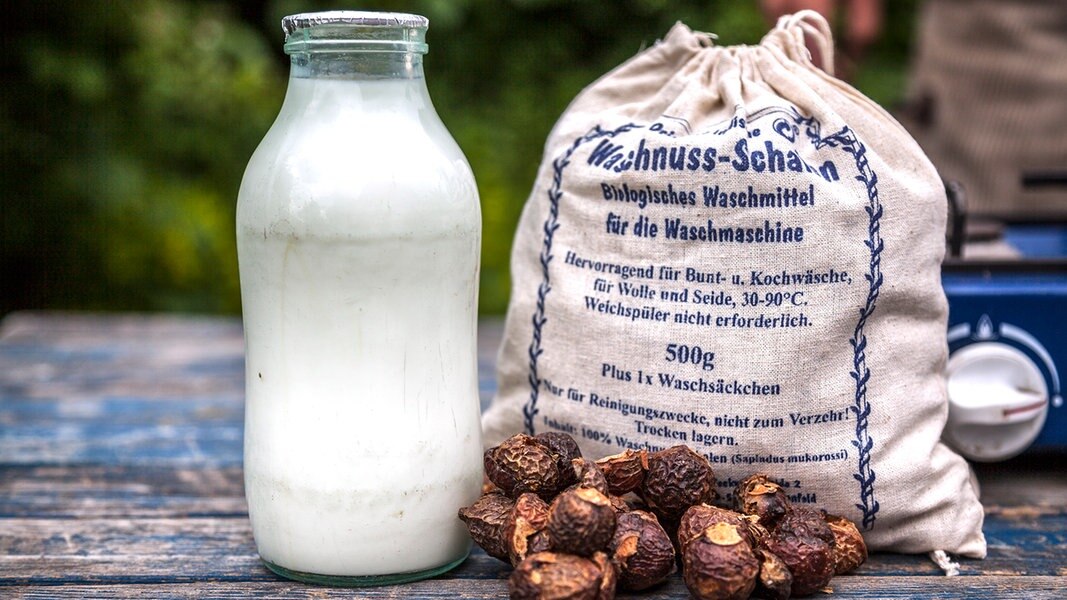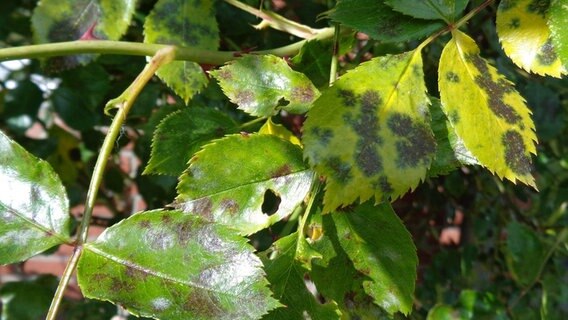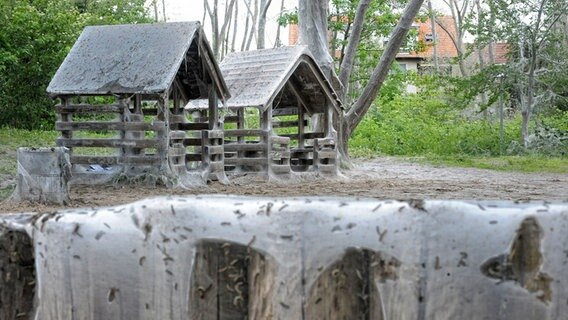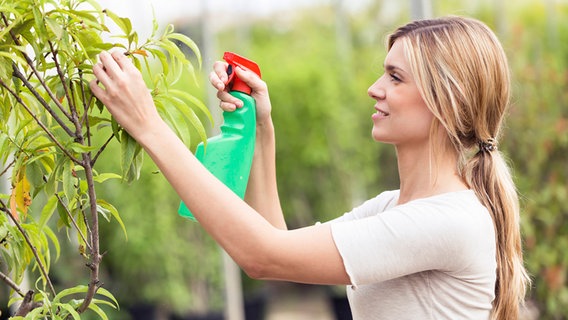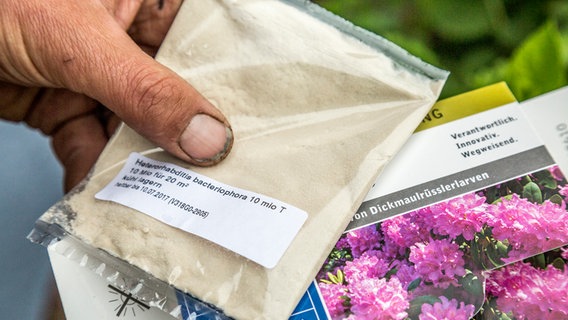Status: 07.06.2023 2:35 p.m
Pests and fungi weaken many plants. Instead of chemicals, they can be combated cheaply and effectively with natural means – with stinging nettles, milk or soap nuts.
Ravenous animals such as vine weevils, sucking insects such as aphids or fungal diseases – many garden owners despair when their plants are attacked by animals or diseases.
Use natural means
But fewer and fewer people want to use the chemical club, because many agents also damage beneficial organisms such as Butterflies, bees and bumblebees. In particular, vegetables that are still to be eaten should not be treated with chemical agents. As an alternative, there are various natural methods.
Identify powdery mildew
Powdery mildew is a fungal disease and appears on the tops of leaves and on buds and flowers.
The most common garden pests include mildew and aphids. Powdery mildew mostly arrives roses and other ornamental plants such as begonias or asters, but also on gooseberries, apple trees, salsify, greenhouse-grown cucumbers and carrots. Powdery mildew can be recognized by a white, mealy coating on the upper side of the leaves. It can also occur on buds and flowers. If the infestation is severe, the leaves of the plant die off. In contrast to powdery mildew, downy mildew is found on the underside of leaves.
Use fresh milk instead of fungicides against powdery mildew
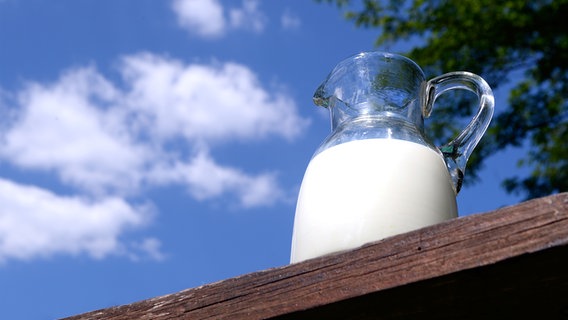
Fresh milk works naturally against powdery mildew.
Milk is an environmentally friendly agent against powdery mildew. The microorganisms contained in it fight the powdery mildew fungus. The sodium phosphate it contains also strengthens the plant’s defenses and thus prevents powdery mildew from coming back. Make a mixture of milk and water in a ratio of 1:8 twice a week and spray the affected plants with it properly. This method has now been tested. It has even been found that milk is often more effective than commercial fungicides.
Important: Use fresh milk if possible, because the microorganisms do the work and should still be “alive” in the milk. Raw milk directly from the farmer is best, which is available in health food stores or from the milk filling station.
Cut off leaves already affected by powdery mildew and also collect them from the ground so that the fungus does not re-enter the natural cycle. Affected leaves belong in the residual waste bin – not on the Compound.
Plant brew acts against pests and strengthens
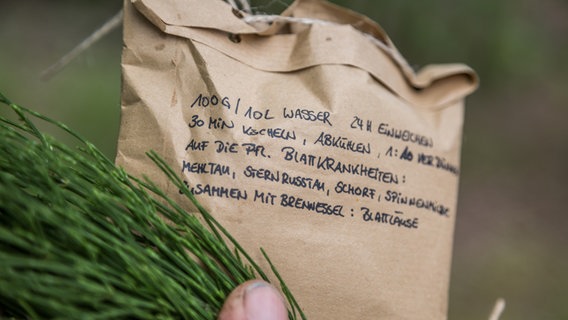
Field horsetail works in many ways.
To prevent pests and fight diseases, various plant broths have proven themselves. You either use the various wild herbs fresh or stock up and dry them. To prepare a brew, add 10 grams of plants to one liter of water and let the whole thing stand for a day. Let the horsetail simmer for an additional 30 minutes. To use, dilute the brew in a ratio of 1:10. The most important helpers are:
- Field horsetail helps against blackspot, powdery mildew, spider mites and scab.
- Fern is used against potassium deficiency, snails and aphids.
- Nettles can be used against aphids and spider mites, they are also an ideal plant strengthener.
- Tansy is effective against sucking insects such as aphids, cherry fruit flies and codling moths, among other things.
- A decoction of elder leaves has a preventive effect against the cabbage white butterfly. If you put it in the burrows of voles and moles, it will drive away unloved garden visitors. It is also effective against ants.
Fight aphids with soap nuts
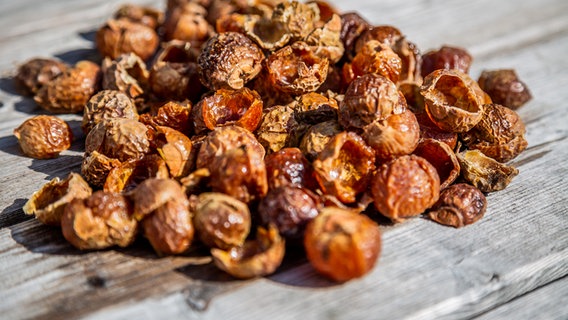
Simply boil soap nuts in water – and you have a natural remedy against pests.
Aphids are also there every year. If the damage to the plant is minor and the infestation with lice is limited, it is enough to hose down the voracious creatures with a hard jet of water or collect them and crush them.
If the infestation is stronger, a purely biological agent will help. The shell of the soap nut (Sapindus mukorossi) has a natural pest control effect. Their peels contain saponin, a natural soap-like substance. It’s easy to make a cheap, odorless, and non-toxic aphid repellent.
Spray plants with decoction of soap nuts
Boil ten soap nuts in a liter of water. Simply fill the cooled brew into a spray bottle and spray the infested leaves with it. One treatment is often enough. If the lice are very stubborn, repeat the spraying process. You can get soap nuts in good drugstores or health food stores. There is also soap nut concentrate in bottles.
Prevent with nutrient-rich garden soil
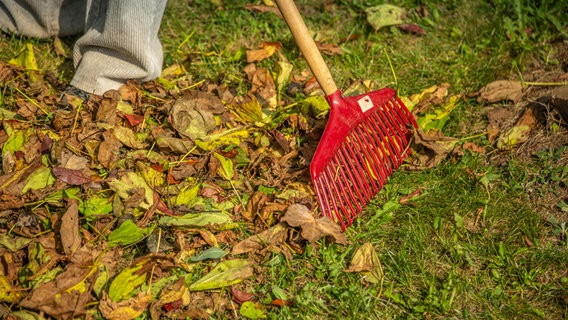
Leaves are a natural fertilizer.
Instead of fighting pests, you can also specifically promote the health of plants so that they are less susceptible. The Garden soil, because well-functioning soil life is a prerequisite for healthy plants. Many garden soils lack nutrients – also because many gardeners Autumn leaves, which also serve as winter protection, can be completely removed early and humus can no longer form. If you have little or no compost of your own, you can compensate for this deficit with a so-called soil activator. Soil activators contain various rock powders and are available from specialist retailers.
Provide plants with the right fertilizer
Sufficient fertilization of the plants is also important, because strong plants are not attacked so quickly by pests or diseases. Gardener Ole Beeker recommends using potassium-rich fertilizers instead of blue fertilizers with a high nitrogen content. Because too much nitrogen leads to a temporary accumulation of proteins, which are a food source for fungi and pests. The nitrogen content is listed with “N” and the potassium content with “K” or “K2O” on every fertilizer package.
It depends on the location
The right location also contributes to the health of plants. Roses, for example, should not be too sheltered and close together, otherwise the leaves cannot dry well after rain and are more susceptible to powdery mildew. Anyone who buys new plants should also pay attention to their resilience. Some varieties are particularly robust and are not easily attacked by pests and fungi.
Further information

